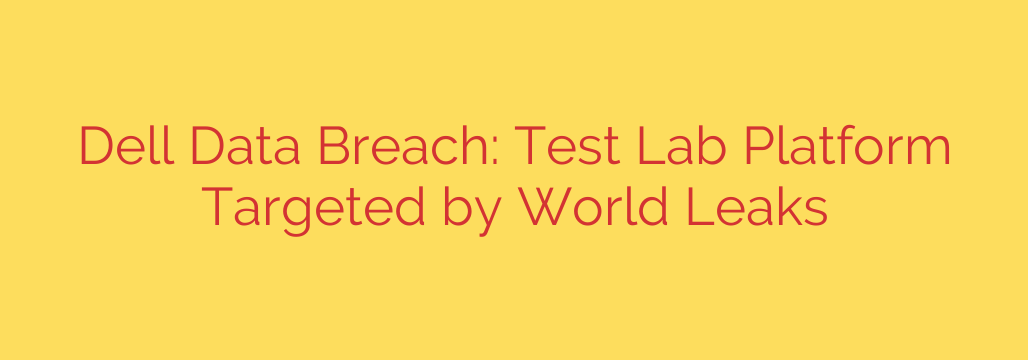
Dell Data Breach: What to Know After 49 Million Customer Records Exposed
Dell has confirmed a significant data breach involving a company portal that contained customer information related to purchases. The incident has resulted in the theft of a database containing the personal and order information of approximately 49 million customers.
While the investigation is still ongoing, this breach highlights the persistent threat of cyberattacks on major corporations and the sensitive data they hold. If you have ever purchased a product from Dell, it is crucial to understand what happened, what data was exposed, and what steps you should take to protect yourself.
What Information Was Compromised?
According to the information available, a threat actor gained unauthorized access to a Dell database containing customer order information. The primary risk comes from the type of data that was stolen, which could be used for sophisticated social engineering or targeted phishing attacks.
Here is a breakdown of the data involved:
Information that WAS exposed:
- Customer Name: Your full name was included in the breach.
- Physical Address: The shipping address associated with your orders.
- Dell Hardware and Order Information: This includes details like the service tag of your device, item description, date of order, and warranty information.
It is important to note what was not included in this specific breach, which helps clarify the immediate risk.
Information that was NOT exposed:
- Financial or payment information: Credit card numbers and bank details were not compromised.
- Email addresses: Your email was reportedly not part of the stolen database.
- Phone numbers: Telephone contact information was also not included.
While the absence of financial data is a relief, the stolen information is still highly valuable to malicious actors. Knowing a customer’s name, address, and the specific products they own allows criminals to craft highly convincing and personalized scams.
The Real Risk: Targeted Scams and Social Engineering
The primary danger from this data breach is not direct financial theft but the potential for highly targeted follow-up attacks. With your name, address, and specific Dell order history, a scammer could:
- Create fake warranty extension offers: They could contact you via mail or find your other contact details online, referencing your exact product service tag to seem legitimate.
- Send convincing phishing attacks: Although emails weren’t stolen in this breach, attackers often cross-reference data from multiple breaches to build a complete profile on a target.
- Initiate physical mail scams: Scammers may send official-looking letters demanding payment for fake services or offering fraudulent refunds.
A threat actor claiming responsibility has already attempted to sell the database on a hacking forum, proving that this sensitive information is now in the wild and available to other criminals.
Actionable Security Steps to Protect Yourself
Even though Dell has notified law enforcement and is continuing its investigation, the responsibility now falls on customers to remain vigilant. Here are the essential steps you should take immediately to secure your information.
Be Extremely Vigilant with All Communications
Be suspicious of any unsolicited contact—whether by mail, email, or phone—that claims to be from Dell. Attackers will use the stolen order information to sound credible. Never provide personal information or make payments based on an unexpected communication. Always verify the request by contacting Dell through its official website.Watch Out for Physical Mail Scams
Since your physical address was compromised, be wary of any official-looking letters related to your Dell purchases. Scammers may send fake invoices, recall notices, or warranty offers. Always verify any such notice by visiting Dell’s official support website directly.Secure Your Dell Account
While your password was not reported as stolen, it is a security best practice to update your Dell account password. If you reuse that password on other websites, change it there as well. Furthermore, enable two-factor authentication (2FA) on your Dell account and any other critical online accounts for an essential layer of extra security.Monitor Your Financial Accounts
Although financial data was not exposed in this breach, it’s always a wise precaution. Keep an eye on your bank and credit card statements for any unusual activity as a general security measure.
Staying informed and taking proactive security measures is the best defense against those who would exploit your personal data. While the Dell breach did not expose financial details, the personal and order information that was stolen is powerful enough to enable convincing and damaging scams. Stay alert and protect your information.
Source: https://www.bleepingcomputer.com/news/security/dell-confirms-breach-of-test-lab-platform-by-world-leaks-extortion-group/








